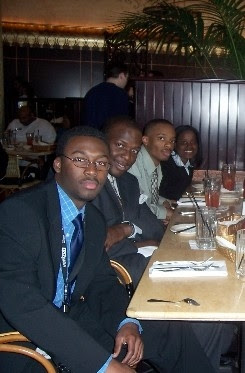 This discussion was triggered by the following Facebook.com group forum question: “What do you think of the 80% of the UWI graduates that leave Jamaica???”
This discussion was triggered by the following Facebook.com group forum question: “What do you think of the 80% of the UWI graduates that leave Jamaica???”
I think after receiving an email from an executive on the island in response to my search for a postgraduate job so that I CAN move back home, I can understand why the UWI graduates leave…he reports plenty of bachelor degree-holding intelligent young people answering phones in call centers or stuck in positions that pay US$17,000 a year, because there are just not enough positions at the post-graduate entry level for them.
Then I see another trend as I survey SplashJamaica and other Caribbean job banks, where there are a lot of higher level roles that are empty and the companies are DYING for people to fill them, to the point where they hire expatriates, foreigners who need work visas.
There is obviously a disconnect there…and I know one immediate issue that causes it: the putting down of roots in the years following graduation from college. In the 5 years between graduation from college and the accumulation of enough experience to qualify for the higher level positions, people are not going to stop living their personal lives, and the ties that develop and the roots that are planted become the ties that bind. I for one wanted to reach back ASAP after graduation, and among other reasons, it was so that I would NOT encounter Mr. Right up here, and end up attached to someone whose career and immediate ties are with the U.S.! In those 5 years, people’s lives become more complex at a faster rate than at any subsequent point in their lives…between 25 and 35 is the prime time that people are meeting, marrying, and laying the groundwork for advancement up the career ladder.
It becomes so much harder to successfully move back and reintegrate once those roots are set (especially if the other person is not from Jamaica, or at least from the Caribbean), versus the relatively simple shift when you are single, and fresh out of college (read: no roots implanted yet). Even without the relationship and other attachments naturally developing, there is the concept of getting “Americanized”…becoming so comfortable with the American way of life that it becomes hard to adjust to, or even understand any longer, the Jamaican way of life. (And this concept can be generally applied to becoming “foreign-minded” in any other destination country). Think of the analogy of a tributary flowing from a pond out to an ocean: The longer Jamaican companies leave Jamaica’s pool of talent spread out in foreign oceans, the more they assimilate and the harder it becomes to remove them from the masses and return them home.
EARLY BIRD RECRUITMENT (FIRST-MOVER ADVANTAGE)
So that 80% that leaves, leave because they have no job waiting on them in Jamaica, and end up staying where they have gone because by the time they are qualified for the decent-paying positions, they have set down roots and become less flexible than they were as new graduates…in the U.S. companies are recruiting on my campus NOW for graduates in December 2007, April 2008, August 2008, and some are even recruiting now for as far out as December 2008! They jump on talent from EARLY. Success for a college program here is measured by what percent of each year’s graduates, on average, are placed in a job relevant to their academic level within six months of graduation. What is the measure of success for the University of the West Indies and other Caribbean institutions of higher learning? Are these institutions being drawn into a commitment to do their part to keep the majority of the brains of the Caribbean IN the Caribbean?
Are Jamaican companies providing relevant, detailed internships for college students with progressive levels of responsibility that give them exposure to the business, the normal duties of the position, and to the executives? Are companies in Jamaica, and across the Caribbean, developing leadership programs to develop talent from early in the way they want that talent to go? One of the places I am interviewing with has a 2 year rotational leadership development program that gives you 6 months in each major facet of the business, which is crucial knowledge that would take way too much time (years-wise) to accumulate by working up and laterally through the ranks! Is anything like that happening in Jamaica, Trinidad, Barbados, or anywhere in the Caribbean?
To Be Continued…
By Michelle Graham Day
Contributing Business Writer

